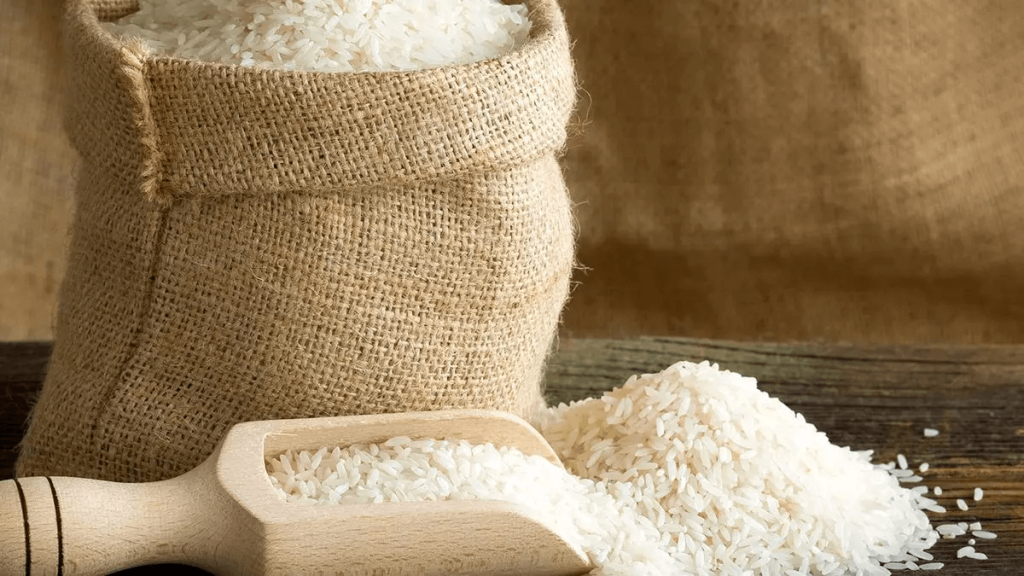Tags
Global rice prices drop over 5% on slack demand, ample supplies.
Strong dollar, higher exchange rate also dragging exports; demand from Africa stable.
By Subramani Ra Mancombu

Rice prices in the global market have dropped by over five per cent in the past three weeks on slack demand and good production resulting in ample supplies.
“Rice prices are down sharply as the production is higher this year. For example, the price of Sona Masuri from Chennai has currently dropped to around ₹42 a kg from ₹62in early December. Similarly, Sona Masuri rice that is compliant with European Union norms costs ₹52-54 a kg,” said New Delhi-based trade analyst S Chandrasekaran.
The lower-priced rice goes to Vietnam, Singapore, while the higher priced to Europe and the US.
Malaysia bargaining
“Export orders to Sri Lanka have got over. The government there has fixed a cap on rice prices, which is discouraging imports. There are not many inquiries,” said M Madan Prakash, Director of Rajathi Group, which exports agricultural commodities.
Importers in Malaysia are bargaining at $490 a tonne cost, insurance and freight (c.i.f) against $580 quoted by exporters. However, exporters are not willing to accept lower quotes because of a rise in freight charges.
“Indian rice prices have not dropped much. In fact, they have not dropped (compared to Vietnam and Thailand),” said BV Krishna Rao, President, The Rice Exporters Association (TREA).
New Delhi-based exporter Rajesh Paharia Jain said prices are lower as a strong dollar has resulted in better realisation in local currencies. “Demand for Indian rice is low as the (currency) exchange rate is higher,” he said.
The general sentiment is market has a big supply to export so the pressure shows on Indian exporters’ need to compete in the world market. “There is 180 degree shift from the same time last year when people ask how high it will go,” he said.
Current prices
According to the Thai Rice Exporters Association, Thailand’s 5 per cent broken white rice is quoted at $494 compared with $523 a tonne in mid-December 2024. India is quoting $447-451, Pakistan $449-553 and Vietnam $460-464 for the same variety.
India enjoys an edge in the parboiled sector, quoting $440-444 a tonne. In comparison, Pakistan is quoting $462-466 and Thailand’s offer price is $506.
“No miller in India wants to keep rice inventories,” said Chandrasekaran. This is particularly true given the record high rice production during the kharif season.
The Ministry of Agriculture and Farmers’ Welfare has estimated kharif rice output at a record 119.34 million tonnes during the current crop year compared with 113.26 mt a year ago. The estimates come amid projections of a record-high Indian rice production of 137 mt this crop year by USDA and the trade.
Vietnam containers stuck
Prakash said about 500 containers of rice consignments from Vietnam have got stuck at Pasir Gudang port in Malaysia. The rice got held up as the grain prices dropped sharply and the importers backed off.
Jain said the collapse in Vietnam’s rice price has led to the Philippines pushing for lower prices. If the Indian government reaches out to the Philippines, it could be a buyer of cheaper rice. “It’s an opportunity for India and Pakistan in view of the free fall,” he said.
The exporters are now looking to sell at throwaway prices and it is also putting some pressure.
TREA’s Rao said India had exported small quantities to the Philippines and Indonesia. “Demand from Africa is good. Currently, 18 ships have anchored at Kakinada port,” he said. However, Jain said shipments from Kakinada are slow due to politics over the alleged diversion of ration rice.
Jain said prices may not fall below a point and could gain once buyers show interest. “ Buyers are not rushing because of perception that supply is massive,” said the New Delhi-based exporter.
Even trade buyers less because of threat of smaller 2-5 container sellers who tend to undercut market
Last week, Agriculture and Farmers’ Welfare Minister Shivraj Singh Chouhan said India has signed a deal with Indonesia to sell one million tonnes of rice with National Cooperative Exports Limited handling it.
FAO update
Globally, rice prices began declining from September, when India removed all curbs on rice exports barring the ban on broken rice. India banned the export of broken rice in September 2023 and imposed a 20 per cent export duty on white rice.
In July 2024, it banned exports of white rice and imposed a 20 per cent export duty on parboiled rice. It also fixed $950 per tonne as the minimum export price for basmati rice. The bans were imposed to control food inflation.
The Food and Agriculture Organisation (FAO), in its rice update, said export prices of Indica rice subsided in most of the major origins in December, as fresh sales tended to slow down and competition for markets remained fierce. Currency depreciations against the dollar also influenced prices downward, adding to the weak undertone set by India’s large kharif supplies.
https://www.thehindubusinessline.com/economy/agri-business/global-rice-prices-drop-over-5-on-slack-demand-ample-supplies/article69077671.ecePublished Date: January 9, 2025






